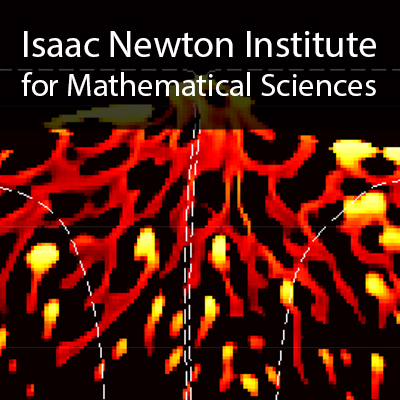Multiscale analysis of sea ice - a partially melted, polycrystalline composite material
1 hour 5 mins,
512.15 MB,
WebM
640x360,
29.97 fps,
44100 Hz,
1.05 Mbits/sec
Share this media item:
Embed this media item:
Embed this media item:
About this item

| Description: |
Golden, K (University of Utah)
Monday 11th April 2016 - 16:00 to 17:00 |
|---|
| Created: | 2016-04-14 14:22 |
|---|---|
| Collection: | Melt in the Mantle |
| Publisher: | Isaac Newton Institute |
| Copyright: | Golden, K |
| Language: | eng (English) |
| Distribution: |
World
|
| Explicit content: | No |
| Aspect Ratio: | 16:9 |
| Screencast: | No |
| Bumper: | UCS Default |
| Trailer: | UCS Default |
| Abstract: | Earth's sea ice packs are key players in the climate system and critical indicators of climate change, as evidenced by the recent precipitous losses of summer Arctic sea ice. As a material, frozen sea water is a polycrystalline composite of a pure ice matrix containing brine inclusions - the melt phase - whose volume fraction and connectivity depend strongly on temperature. The brine phase undergoes a percolation threshold at a critical temperature where the inclusions coalesce to form channels through which the melt phase can flow. Fluid transport through sea ice mediates key climatological and biological processes, and can enhance thermal transport via convection in the porous microstructure.
During the Arctic melt season, the sea ice surface is transformed from vast expanses of snow covered ice to complex mosaics of ice and melt ponds. Sea ice albedo, a key parameter in climate modeling, is largely determined by melt pond evolution. As the ponds grow and coalesce, the melt phase undergoes a percolation threshold and the fractal dimension of the pond boundaries transitions from 1 to about 2 around a critical pond size. In the two lectures, I will discuss mathematical models of composite materials and statistical physics that we have been using to describe the effective fluid, thermal, and electromagnetic transport properties of sea ice, and to address other problems in sea ice physics such as melt pond evolution. I will cover a range of mathematical techniques, some of which may possibly shed light on similar questions for partially molten rock. They include percolation theory, multiscale homogenization, integral representations for effective transport coefficients of composite media, spectral measures and random matrix theory, homogenization for advection diffusion processes, and Ising models. These models have been developed in conjunction with our field experiments in the Arctic and Antarctic. A short video on a recent Antarctic expedition will be shown. |
|---|---|
Available Formats
| Format | Quality | Bitrate | Size | |||
|---|---|---|---|---|---|---|
| MPEG-4 Video | 640x360 | 1.94 Mbits/sec | 948.80 MB | View | Download | |
| WebM * | 640x360 | 1.05 Mbits/sec | 512.15 MB | View | Download | |
| iPod Video | 480x270 | 523.07 kbits/sec | 249.02 MB | View | Download | |
| MP3 | 44100 Hz | 250.9 kbits/sec | 119.45 MB | Listen | Download | |
| Auto | (Allows browser to choose a format it supports) | |||||

